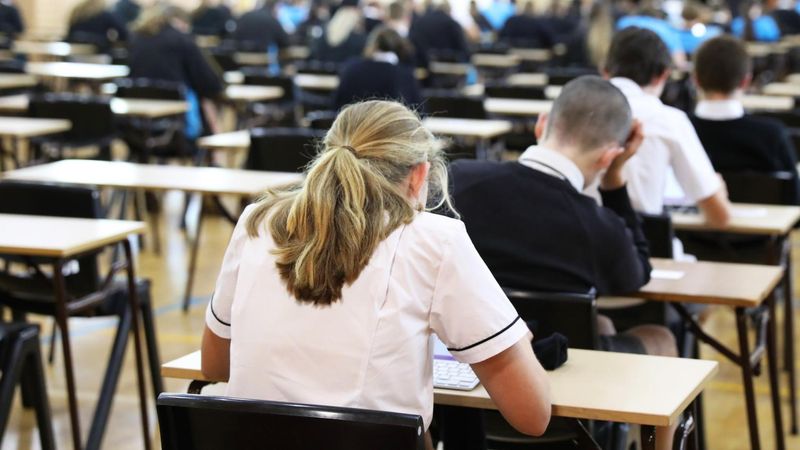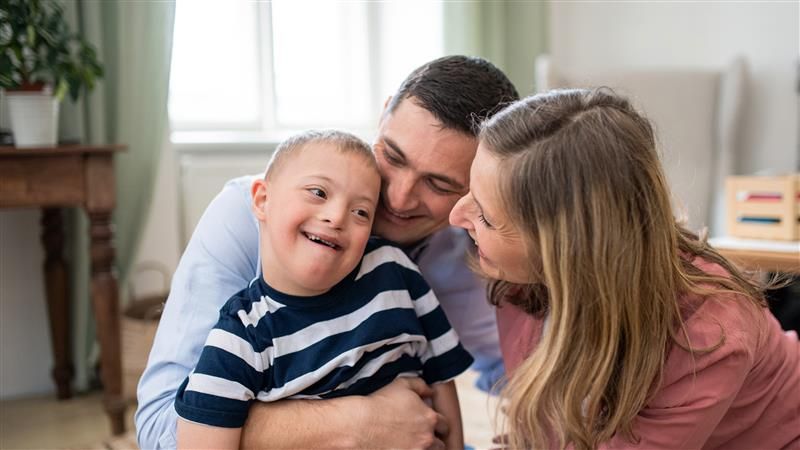Whether it's tackling travel worries, easing first-day jitters or creating practical routines, the goal is simple: help your child feel ready, supported and secure. Here's how you can make the difference.
Activities to do together
Watch this video together: Moving Up! The transition to secondary school - YouTube
This video looks at some of the worries children might have about starting a new school, from unfamiliar surroundings to missing old friends. This makes a wonderful starting point for open conversations, helping your child express their thoughts and feel more confident about the upcoming changes.
The browser you are using is not supported or you do not have JavaScript enabled. Update your browser or enable JavaScript to view this video.
Moving Up! The transition to secondary school animation by Anna Freud. View the transcript.
Read this together: Barnardo’s Guide – stepping into secondary school
This guide help children to explore their thoughts and feelings about the move to secondary school through a range of interactive activities. It aims to help children feel more confident and prepared for their new start.
Exercises to try if your child is feeling anxious
Box Breathing Exercise - A simple relaxation technique to calm nerves: Box breathing exercise video
Progressive Muscle Relaxation (PMR) - Helps kids release tension and feel physically at ease: PMR video
Grounding Exercise (Outdoors) - Encourages mindfulness through the senses - ideal for anxious moments: Grounding exercise video
Above anything else
Make the holidays count - use this time to prepare for the start of the new term, talk through any worries and have a plan (see the Barnardo’s Transition activity book for preparing for this together).
Help them speak up about what their needs are - they may find it easier to write these. There may be particular things that will help them in the new school environment that can be shared with the new school and teachers.
Reassure them that they are not alone (see the video from Anna Freud) everyone feels worried in new situations and with new people. Help them in making these new connections with other young people through clubs/activities or play dates through the summer.
Remember that managing your own anxiety effectively as a parent is key to supporting your child - see the 5 steps of wellbeing for your own support through this transition.
Always liaise with school to ensure you are working together to support your child.
Parental support strategies
Help your child adjust to their new academic, social, and physical environment with these key steps:
Travel - Discuss your child's journey to school, practise this with them during the holidays, identify any peers from primary school that may be taking the same route, provide social stories regarding how to use public transport safely.
Equipment and uniform - Make sure that you have purchased the appropriate uniform and equipment well in advance, discuss this with them so that they know what it is all for, get them to try uniform on and make this fun, provide an equipment checklist for them.
New school environment - Make a simplified map of the school and highlight key subject areas, visit the school and walk around the wider surrounding areas, make a fun quiz afterwards to see what they have remembered.
Structure of the school day - Provide timetables of the new school day, explain breaks and lunchtimes, discuss your own experiences of how secondary school is structured differently to primary school.
Key adults in school - Give a simplified structure of key staff members such as form tutor and subject teachers, provide photos from the school website, identify other key adults at the new school.
Social support - Discuss social situations that they may encounter at school, talk about how to make new friends and where they can go if they find themselves alone during unstructured times, such as the dinner hall and school library.
Academic demands - Discuss how lessons are structured and the different homework requirements at secondary school, organise a safe space at home to complete homework tasks and discuss how you will support them.
SEND and pastoral support - Discuss how young people with SEND will be supported at the school, who the SENCo and pastoral leads are, and where these areas are within the school.
Most importantly…
Spend time with your child discussing some of your own positive experiences at secondary school. Reassure them that you are in this together and that you will support them all the way. Your calmness is the anchor they need!
For more information about school transitions and support in school for children with SEND visit the SEND Information Hub.




